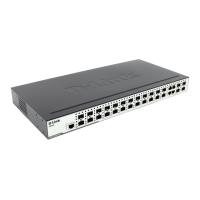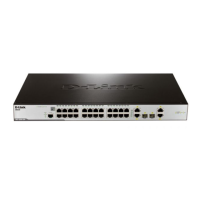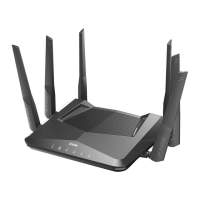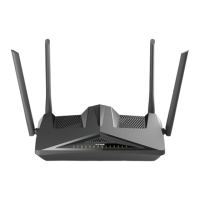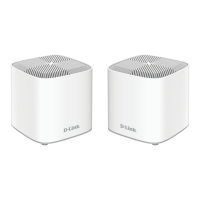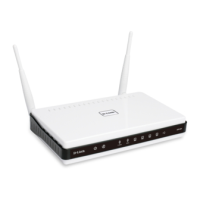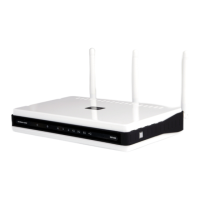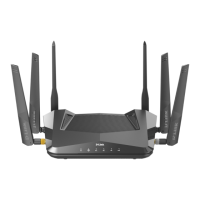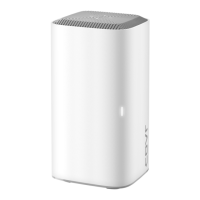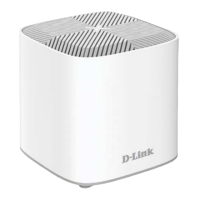xStack
®
DGS-3200 Series Layer 2 Gigabit Ethernet Managed Switch
281
latency: The delay between the time a device receives a packet and the time the packet is forwarded out of the destination port.
line speed: See baud rate.
main port: The port in a resilient link that carries data traffic in normal operating conditions.
MDI - Mediu m Dependent Interface: An Et hernet port co nnection where t he transmitter o f one d evice is co nnected t o the
receiver of another device.
MDI-X - Me dium Dependent Interface Cross-over: An Ethernet port connection where the internal transmit and receive lines
are crossed.
MIB - Management Information Base: Stores a device's management charact eristics and parameters. M IBs are used by t he
Simple Net work M anagement P rotocol (SNMP) t o c ontain at tributes of t heir m anaged sy stems. The S witch co ntains i ts own
internal MIB.
multicast: Si ngle packets c opied t o a specific subset of network addresses. These address es are specified in th e destination-
address field of the packet.
protocol: A set of rules for communication between devices on a network. The rules dictate format, timing, sequencing and error
control.
resilient link: A pair of ports that can be configured so that o ne will take over data transmission should the other fail. See also
main port and standby port.
RJ-45: Standard 8-wire connectors for IEEE 802.3 10BASE-T networks.
RMON: Remote Monitoring. A subset of SNMP MIB II that allows monitoring and management capabilities by addressing up to
ten different groups of information.
RPS - Redundant Power System: A device that provides a backup source of power when connected to the Switch.
server farm: A cluster of servers in a centralized location serving a large user population.
SLIP - Serial Line Internet Protocol: A protocol which allows IP to run over a serial line connection.
SNMP - Simple Network Ma nagement Prot ocol: A protocol o riginally desi gned t o be u sed i n managing TC P/IP i nternets.
SNMP i s presently im plemented on a wide ran ge o f c omputers and networking e quipment and m ay be use d t o manage many
aspects of network and end station operation.
Spanning Tree Protoc ol (STP): A bridge-based system for providing fault tolerance on networks. STP works by allowing the
user t o im plement p arallel p aths for n etwork tr affic, and en sure th at redundant p aths ar e disabled wh en th e main p aths ar e
operational and enabled if the main paths fail.
standby port: The port in a resilient link that will take over data transmission if the main port in the link fails.
switch: A d evice wh ich filters, forwards an d flood s packets b ased on the p acket's destin ation add ress. Th e switch learn s t he
addresses associated with each switch port and builds tables based on this information to be used for the switching decision.
TCP/IP: A layered set of communications protocols providing Telnet terminal emulation, FTP file transfer, and other services for
communication among a wide range of computer equipment.
Telnet: A TCP/IP application protocol that provides virtual terminal service, letting a user log in to another computer system and
access a host as if the user were connected directly to the host.
TFTP - Trivial File Tra nsfer Protocol: Allows the user to transfer files (such as software upgrades) from a remote device using
your switch's local management capabilities.
UDP - User Da tagram Protocol: An I nternet st andard pr otocol t hat allows a n a pplication p rogram on one device t o se nd a
datagram to an application program on another device.
VLAN - Vir tual LA N: A group of location- and t opology-independent devices that c ommunicate as i f they are o n a c ommon
physical LAN.
VLT - Virtual LAN Trunk: A Switch-to-Switch link which carries traffic for all the VLANs on each Switch.
VT100: A type of terminal that uses ASCII characters. VT100 screens have a text-based appearance.
.
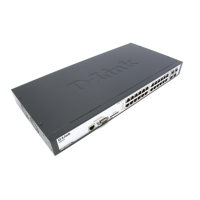
